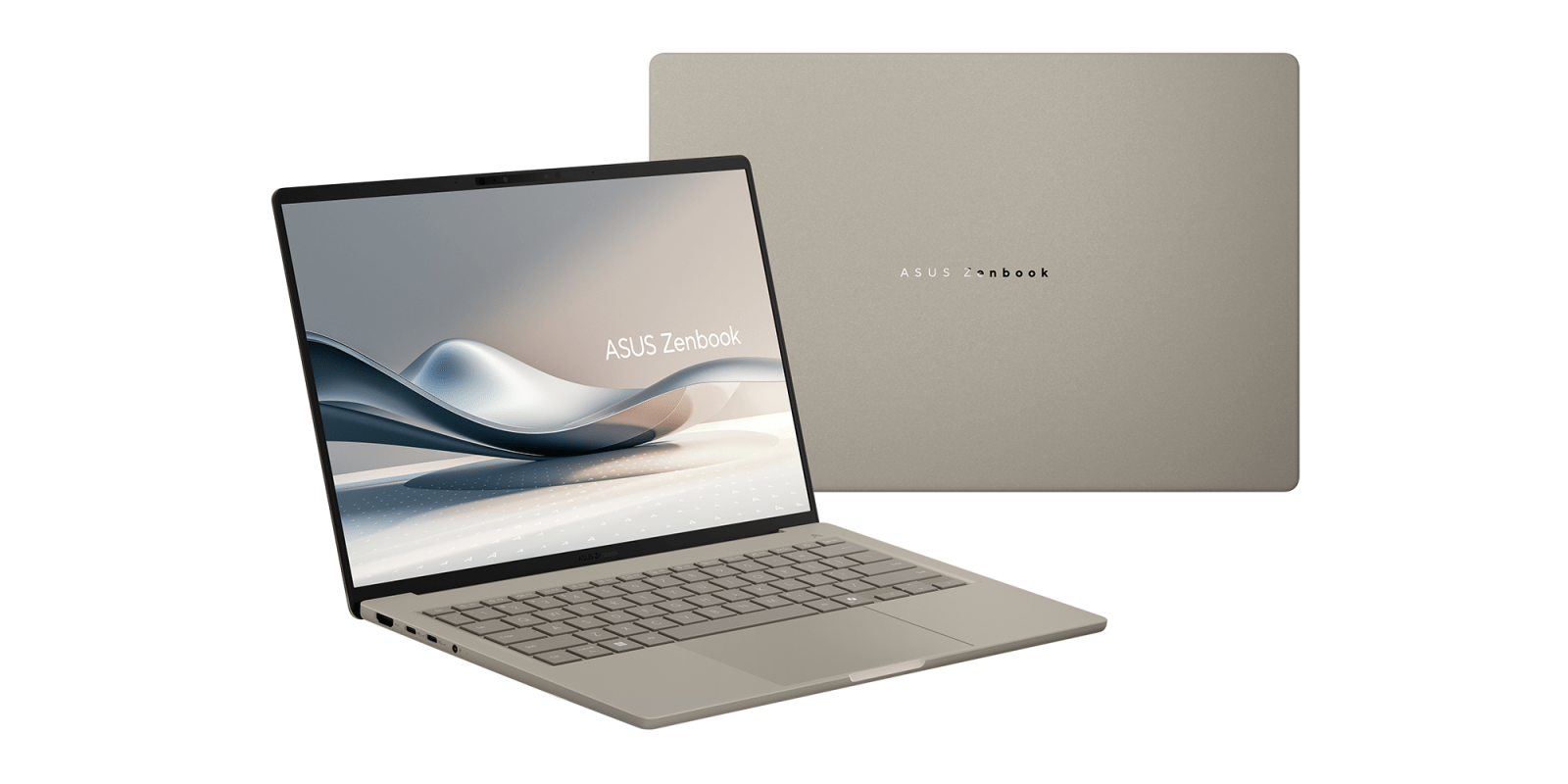
It says a lot about Apple’s design that the MacBook Air is seen as the ultimate standard targeted by PC laptop brands. Just matching the aesthetics and performance of the machine is seen as a tough goal, but ASUS may have gone one better with its new Zenbook A14.
The new machine not only succeeds in emulating the look of the MacBook Air, but exceeds its specs in no fewer than five different ways – including being even lighter …
ASUS Zenbook A14
Glance quickly at the machine and you could easily be forgiven for mistaking it for a new MacBook Air. The keyboard looks just as neat, the trackpad as large, and the overall design looks every bit as sleek as the Apple design on which it is so clearly based.
But despite the base machine’s $900 price being less than the starting price of a 13-inch MacBook Air, ASUS has actually beaten Apple’s specs in five different ways.
Weight
The MacBook Air weighs in at 2.7 pounds, while the Zenbook A14 comes in at 2.2 pounds for the lightest model in the line-up, and 2.4 pounds for the heaviest one.
Casing material
That weight saving appears in part to be based on a new material which ASUS says is 30% lighter and three times stronger than anodized aluminum. The company calls it Ceraluminum, as it claims to combine the benefits of both ceramic and aluminum materials.
Ceraluminum undergoes rigorous lab testing to meet tough real-world conditions. For scratch resistance, the material is tested by placing the laptop, along with keys and coins, inside a rotating drum.
Shock resistance is tested by dropping the laptop from a 50cm height, and wear resistance is evaluated by rubbing the material 18,000 times in the same place to check the color doesn’t fade. This robust testing ensures that Zenbook A14 remains scratch-free, resilient to shocks, and maintains its pristine looks, providing users with a laptop that is both lightweight and exceptionally durable.
Display
The A14 has an OLED screen, in contrast with Apple’s IPS LCD with miniLED backlighting.
Apple doesn’t look set to make the switch to OLED screens until next year even for the MacBook Pro, while the MacBook Air may have to wait until 2028.
Bezels
Also display-related, while there isn’t much in it, it certainly appears as if ASUS has managed thinner bezels at the sides of the screen.
Battery life
Apple cites up to 18 hours of movie playback (the least demanding task), while ASUS claims “over 32 hours of continuous video playback on a single charge.”
But it won’t match MacBook Air performance
One area where it won’t compete with the real deal is in performance. The machine offers a choice of Snapdragon X Plus or Snapdragon X Elite processors, and those are not remotely in the same league as the M2 or M3 chip you get with the MacBook Air.
The MacBook Air is so powerful that you actually need a pretty good reason now to opt instead for the more expensive MacBook Pro.
But given that many MacBook Air owners use their machines for undemanding tasks like writing, email, and web, the Zenbook will have more than enough power for many.
The best news about this for Mac users is that it puts pressure on Apple to up its own game in the other areas where the A14 does push the limits.
Photo: ASUS
FTC: We use income earning auto affiliate links. More.





